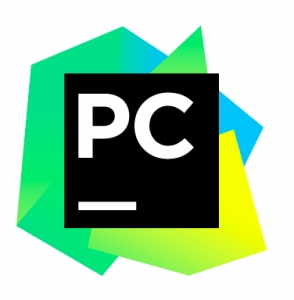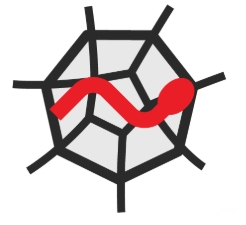Free Airdrop Season 7 is LIVE! Answer fun questions or do simple tasks to earn rewards from the $30K BitDegree prize pool. Participate Now ! 🔥
Choosing the best Python IDE for you can do wonders. By providing all the tools necessary for application development, it saves you a ton of time and simplifies your daily work. A lot of basic tasks can be automated – why do them manually when you can dedicate that time to polish the unique features of your project?
There can be no automation for the first step you need to take, which is choosing your personal best Python IDE. However, we will try our best to help you by presenting the most noteworthy choices in a comprehensive comparison guide.
Table of Contents
A Python Development Environment VS a Code Editor

Follow the Datacamp promo code link & get an exclusive 25% OFF Datacamp subscriptions. Act now while the offer is still available!
Before we choose the best Python IDE, we need to clarify the difference between an IDE and a code editor. This is a question that puzzles a lot of beginners. Both of the terms represent computer software, and you can use both for application development. So what exactly sets them apart?
To put it simply, a code editor is a smaller program that allows you to write your code. It is basically a text editor with a few additional features, such as syntax highlighting and writing suggestions. Some of them do have extra in-built functionalities, such as a terminal or a debugger. Still, that's pretty much the extent of it. Now, an integrated development environment (IDE) contains a code editor plus a ton of other tools. These can help you with building procedures, project management, etc. IDEs also usually come equipped with libraries that make it much easier to write your code.
Online learning platforms like DataCamp offer coding environments that emulate the feeling of working with an IDE. You can check out our guide to the best DataCamp Python courses to learn more about how this platform can help you become an expert Python programmer.
IDLE: for your first steps
IDLE is often recommended as the best Python IDE for a rookie: even the name itself stands for Integrated Development and Learning Environment. It is written purely in Python and works well on Windows, macOS, and Unix. Not only IDLE is a free Python IDE, but it actually comes inbuilt in Python since the end of 1998. This means you don't have to go through any separate installation process whatsoever!
Using IDLE, you get a simple and easy to use code editor with all the basic functionalities one could expect (syntax highlighting, automatic indentations, auto completion, etc.). After you're done, you can debug and execute your code straightaway. There are some extensions you can use with IDLE, however, the number is somewhat small when compared to other popular Python development environments. That's only natural, as IDLE seems to be mainly aimed at coding beginners. Advanced users tend to criticize its various usage issues, such as losing focus and not numbering code lines.
PyCharm: function for a price

JetBrains first introduced the PyCharm IDE in 2010. Three years later, they also released a Community Edition. Unlike the Professional one, it is free and open-source. However, this also means certain limits in terms of functionality. The Professional edition has a free thirty-day trial period – after that, it will cost you around 220 dollars per year or around a tenth of that per month. PyCharm is currently on version 2020.2, and a Beta version of 2023.3 has been released as well. You can use this Python IDE on Linux, Windows, and macOS. The user interface is fully customizable, plus, there's a wide selection of plugins if you wish to extend the field of functionalities.
PyCharm is one of the best Python IDEs in terms of coding assistance. Not only it has great syntax and error highlighting features, but it also offers quick fixes and great navigation tools. Apart from Python, PyCharm also supports and instantly recognizes HTML, CSS, JavaScript, TypeScript and CoffeeScript. The live editing feature lets you preview the changes your code updates cause.
A debugger, a terminal and a test runner all come integrated in PyCharm. With the Professional Edition, you also get a bunch of scientific tools, as well as support for all the most popular database management systems and coding frameworks.
Spyder: for the scientist within you
 We'll cut straight to the chase: Spyder is not the best Python IDE for a beginner... as well as most developers. Still, it is an unsurpassable choice for those into scientific computing. Initially released in 2009, Spyder literally stands for Scientific Python Development Environment. It is purposely designed for data analysts, engineers, and scientists of various fields. Spyder is completely free to download for Windows, macOS, and Linux, but you can help fund the development with a voluntary donation.
We'll cut straight to the chase: Spyder is not the best Python IDE for a beginner... as well as most developers. Still, it is an unsurpassable choice for those into scientific computing. Initially released in 2009, Spyder literally stands for Scientific Python Development Environment. It is purposely designed for data analysts, engineers, and scientists of various fields. Spyder is completely free to download for Windows, macOS, and Linux, but you can help fund the development with a voluntary donation.
Like a lot of well-made Python development environments, Spyder IDE has a simple and helpful code editor, a debugger, a history log and a console built-in by default. In addition to that, it has a few functionalities specially aimed to the scientific audience, such as multiple IPython consoles, static code analysis, and a somewhat unique variable explorer pane. As for the graphical user interface (GUI), Spyder uses the Qt framework, writen in C++.
A variety of scientific packages, such as NumPy or SciPy, comes integrated in Spyder. If that's not enough, you can choose from a wide range of add-ons and get even more functionalities – e.g., unit testing framework integration or improved memory management. However, keep in mind that even the best Python IDE will fall short on performance if you overload it with a gazillion of plugins.
Wing: something for everyone
 First released for Linux in 2000, the Wing IDE now has three versions: Wing Pro, Wing Personal and Wing 101. Whichever you choose, you will be able to use the Python IDE on Windows, macOS, and Linux. Wing Pro is a commercial product meant for professional use. After the free thirty-day trial ends, a licence for one user costs either a yearly tribute of $179 or a one single payment of $245 (upgrades not included).
First released for Linux in 2000, the Wing IDE now has three versions: Wing Pro, Wing Personal and Wing 101. Whichever you choose, you will be able to use the Python IDE on Windows, macOS, and Linux. Wing Pro is a commercial product meant for professional use. After the free thirty-day trial ends, a licence for one user costs either a yearly tribute of $179 or a one single payment of $245 (upgrades not included).
Wing Personal and Wing 101 are both free Python IDEs. As a result, they have much more limited functionalities. Wing 101 is the most basic version, meant to be used by coding beginners. It provides you with the most necessary tools: a simple code editor, a basic debugger and a search feature. The students and hobbyists that use Wing Personal get additional editor features (e.g., code folding and multiple selections), as well as some project management tools.
With the Pro version, the big guns step in. A licenced user can use supported frameworks, perform unit testing and refactoring. You also get integrated version control systems, including but not limited to Git, CVS, and Bazaar. As the source code is made available to you as well, you are free to extend it using Python scripts. Wing Pro can also be considered the best IDE for Python code debugging, as it allows remote and multi-threaded debugging processes.
Using PyDev with Eclipse
 When looking for the best Python IDE, you should also have a look at PyDev – yet, it's not really an IDE on its own. Confused? Let us explain.
When looking for the best Python IDE, you should also have a look at PyDev – yet, it's not really an IDE on its own. Confused? Let us explain.
In 2001, a team in IBM released the Eclipse IDE, which is currently on version 4.13. Its main advantage is extensibility. Using a powerful plug-in system, you can create a truly impressive custom IDE for your projects. Some plug-ins provide the Eclipse IDE with additional language support. One of those, as you might have already guessed, is PyDev. Having it installed lets you use Eclipse as a free Python IDE. Just like Spyder, PyDev accepts voluntary donations on the Patreon platform.
The most recent version is PyDev 7.4, which supports not only Python 3.8, but also Jython and IronPython. You can modify, execute and debug your code in an interactive console. As with most Python development environments, you get an editor with syntax highlighting, code folding, smart indentations, content assistants, code completion tools, and so on. The debugger sports multiple threads, simple and conditional breakpoints, expression watch and variable display.
However, PyDev does fall short on documentation: it's rather hard to find what you need. The FAQ has no categories whatsoever, you're referred to StackOverflow for any general questions, and on one occasion they literally tell you to 'search the net for what you want'. Considering the cumbersome installation process, this is a rather serious disadvantage.

Did you know?
Have you ever wondered which online learning platforms are the best for your career?
The best Python IDE: did we find it?
The list of contenders to take the crown of the best Python IDE is rather long. We couldn't possibly fit them all in one guide. However, we tried our best to introduce you to the most widely-used options for both paid and free Python IDEs.
Choosing a personal best IDE for Python truly depends on your needs and expectations. If you don't mind paying to get truly professional software, take a closer look at PyCharm and Wing Pro. PyDev has its pros and cons. And yet, it might be worth a try if you're already familiar with the Eclipse IDE and its peculiarities. As for the science geeks, your choice is probably the easiest: get Spyder and dive head first into your breathtaking projects.
If you're a beginner, IDLE or Wing 101 might be a great first step. The software is lightweight, plus, they will not scare you off by being too complex. And if you have any doubts about your knowledge in Python, don't hesitate to strengthen it with BitDegree's online courses – just like Wing, we have something for everyone's taste!













